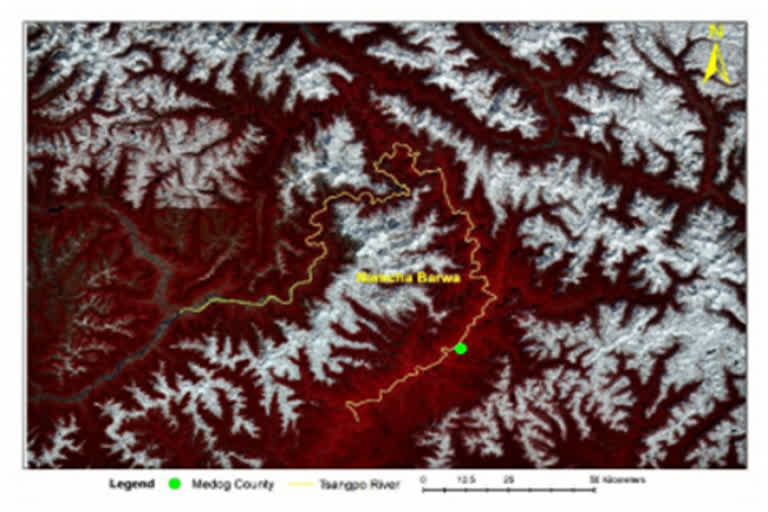New Delhi:China’s supremely ambitious plan to dam the Yarlung Tsangpo-Brahmaputra river in at least two more points in eastern Tibet to generate electricity has no parallel in human history nor in the magnitude of danger it will pose to lower riparian regions in India and Bangladesh.
The plan has at its core an unprecedented and hugely technologically challenging project that includes plunging mind boggling volumes of water down by about 2,000 metres (2 km) through 40-50 km long tunnels, two scientists studying the issue told ETV Bharat.
Two of the dam sites have been identified to be in Metok (Medog or Motuo) county and at Daduo (Daduquia) which are located not very far from the Line of Actual Control (LAC) or the defacto border with India.
According to an unpublished article written by the two scientists Dr Nayan Sharma and Dr Dheeraj Kumar: “Both (Motuo and Daduo dams) involve diverting water from the river through a man-made short-cut tunnel that avoids much of the Great Bend, sending huge volumes of water straight across from intercept points where the river is just below 3,000 metres, rushing down to rejoin the river on the far side of the Bend, where it is only at 850 metres (Motuo) or 560 metres (at Daduo).”
The tunnels will be dug underneath mountains that have some of the world’s tallest peaks including the Namcha Barwa (7780 metres) and the Gyala Peri (7293 m) beneath which the frothing Tsangpo takes a 180 degree turn which is called the ‘Great Bend’.
Sharma and Kumar have written in the report: “This (the dams project) makes maximum use of a drop of more than 2 kilometres to drive enormous turbines and produce electricity on a scale that dwarfs even the world’s largest power plant ‘Three Gorges’.”
“Not only have Chinese hydro engineers sketched such plans, they have published proposed routes for the ultra high voltage cables that would then step across the deep gorges of nearby rivers in order to reach the core cities of western China, Chongqing and Chengdu,” the report says.
Recently, Chinese media has also reported that the enormous power generated will also be used to supply electricity to Nepal and China's neighbouring countries.
